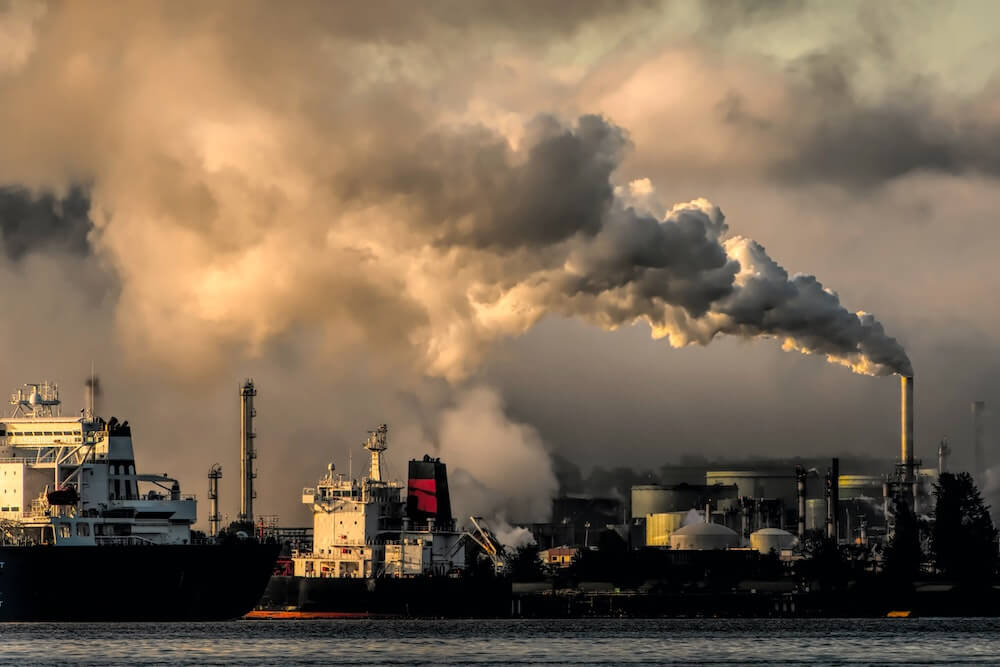South Africa is one of the world’s biggest greenhouse gas emitters. The 452 megatonnes of carbon dioxide it produced from burning fossil fuels in 2020 was the 13th highest amount emitted by a country.
It’s a long way behind China’s 10,000 megatonnes, the United States’ 4,700 megatonnes and India’s 2,400 megatonnes, but it’s by far the biggest emitter in Africa.


Why do greenhouse gas emissions matter?
Greenhouse gases, of which carbon dioxide is just one, trap heat in the atmosphere, causing temperatures on the Earth’s surface to increase.
What happens when temperatures increase? Extreme weather events, such as flooding, droughts, wildfires and hurricanes, increase in frequency and intensity.
How much have temperatures increased?
Scientists use global average temperatures recorded between 1850 and 1900 – known as pre-industrial levels – as a baseline to measure how much temperatures have increased. Global average temperatures inched over 1°C above pre-industrial levels around 2017.
Scientists have set a target to limit temperature increases to 1.5°C above pre-industrial levels. But in many regions average temperatures have already exceeded that target.

In 2015, at a climate change conference in Paris, countries agreed to cut greenhouse gas emissions with a view to keeping the increase in the global average temperature to well below 2°C and pursuing efforts to limit the temperature increase to 1.5°C above pre-industrial levels.
How are greenhouse gas emissions measured?
Emissions are often measured in carbon dioxide equivalent (CO2e). Some gases, like methane, are more effective at warming than CO2, so scientists use their global warming potential to convert emissions of these gases into their CO2 equivalents.
The large human-caused increase in carbon dioxide in the atmosphere has caused the majority of global warming.
The three main greenhouse gases are:
Carbon dioxide (CO2), arises from fossil fuel combustion, deforestation and cement production. It stays in the atmosphere for up to 1,000 years.
Methane (CH4) arises from fossil fuel production, agriculture and landfill sites. It stays in the atmosphere for about 12 years and is 25 times more potent than CO2 in causing global warming
Nitrous oxide (NO), arises from fertilizer application, fossil fuel combustion, biomass burning and industrial processes. It stays in the atmosphere for about 120 years and is 260 times more potent than CO2 in causing global warming
Which sectors are the biggest emitters of GHGs?
The burning of fossil fuels is the biggest contributor to greenhouse gas emissions.
Fossil fuels are burned to produce energy, to generate heat and electricity and to power the engines of vehicles, ships and planes. Seventy-three percent of greenhouse gas emissions come from fossil fuels burned to produce energy.

What are countries doing to reduce their emissions?
Countries that signed the Paris Agreement in 2015 set targets for reducing their national emissions, which are contained in Nationally Determined Contributions (NDCs) that are meant to be updated every five years.
South Africa’s 2025 annual greenhouse gas emissions target is in a range from 398 to 510 Mt CO2e. Its 2030 target is in a range from 350 to 420 Mt CO2e.
The annual fossil fuel emissions in 2020 were already within that target range.
The energy sector is key to South Africa reducing its GHG emissions. Most of the country’s electricity if generated by burning coal.
Renewable energy projects are key to reducing fossil fuel use as are green transport measures, such as electric and hybrid vehicles, and public transport.
There was a record drop in global emissions in 2020 because of restrictions imposed during the Covid-19 pandemic but the Global Carbon Project projected that emissions would increase again in 2021.
